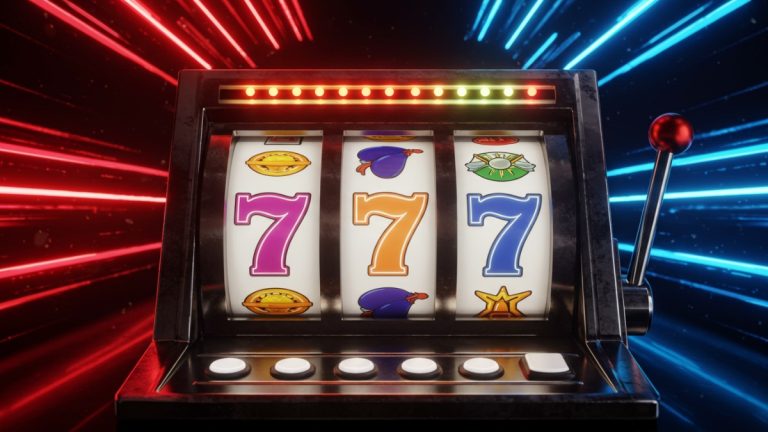Does Return to Player Change Over Time?
This article explains return to player and what is RTP in slots. Understanding RTP helps players make smarter betting decisions. Return to Player percentages indicate how much a game pays back over time. Most slots have fixed RTP, while some allow legitimate variations. Knowing these mechanics improves overall gaming strategy and expectations. Find out whether RTP over time really changes during play.
💡 Did you know? The concept of RTP was first introduced in the 1990s when gaming regulators began requiring transparency in slot machine mathematics. Today, it’s a legal requirement in most jurisdictions to display RTP information to players.
How fixed RTP slots operate
Fixed percentage slots represent the traditional approach to game design, where the return to player value remains permanently encoded within the game’s software architecture. These games undergo rigorous testing during development, with millions of simulated spins confirming that the mathematical model performs exactly as intended before release. Once a game launches with a specific percentage, that value becomes an immutable characteristic, similar to the number of paylines or the symbol distribution on the reels.
📊 Interesting fact: Testing agencies typically simulate between 10 million to 100 million spins to verify that a slot’s actual performance matches its theoretical RTP. This extensive testing ensures the game operates fairly before it reaches players.
When RTP is adjustable by providers
Modern slot development has introduced legitimate flexibility in payout configurations, though this adjustability operates within carefully defined parameters established during the game’s creation. Software providers sometimes design games with multiple certified percentage settings, typically ranging between 94% and 97%, allowing operators to select from predetermined options rather than arbitrarily modifying values. This flexibility serves various market needs, as different jurisdictions may have specific regulatory requirements or competitive considerations that influence operator choices.
The adjustment mechanism works through distinct game versions rather than real-time modifications, meaning that once an operator selects a particular setting, that configuration remains stable for all players accessing that specific instance of the game. These variations undergo the same rigorous testing and certification as fixed games, with each possible setting verified independently to ensure fairness and compliance with regulatory standards. The slot machine rtp in these cases represents one of several validated mathematical models, not a fluid value that fluctuates during gameplay.
🎰 Pro tip: Popular game providers like NetEnt, Microgaming, and Pragmatic Play often offer their slots in multiple RTP configurations. The same game might be available at 96.5% in one casino and 94% in another—always check the game’s info screen before playing.
Implications for player expectations
The existence of both fixed and adjustable systems creates important considerations for developing realistic expectations about your gaming sessions. Knowledge about which type of game you’re playing influences how you interpret short-term results and plan your long-term gaming strategy. Fixed-percentage games offer complete predictability in terms of mathematical expectations, while adjustable versions require awareness that different casinos might offer slightly different configurations of the same title.
Players should recognize that regardless of the system type, short-term results will vary significantly due to the inherent variance in slot gaming. A game with a 96% return to player might produce sessions where you win 150% of your wagers or lose everything, as these percentages only manifest accurately over millions of spins. The distinction between fixed and adjustable versions becomes relevant primarily when comparing the same game across different platforms or tracking changes over extended periods at a single operator.
Operator-selectable RTP features
The capability for operators to select from multiple certified configurations represents a significant evolution in how modern casinos manage their game portfolios. This feature allows us to optimize our offerings based on various factors including regulatory requirements, market positioning, and player preferences while maintaining complete transparency about the selected settings. Understanding this mechanism helps explain why identical games might perform slightly differently across various platforms, though always within predetermined and certified parameters. The RTP meaning is crucial for players who want to maximize their chances of winning.
🔍 Research insight: A 2023 industry study found that 68% of modern online slots offer multiple RTP configurations, with most providers offering at least three different settings per game. This trend has increased significantly from just 35% in 2018.
Understanding how operators can set RTP
The technical implementation of selectable percentages occurs through backend configuration options provided by game developers during the integration process. When we add a new game to our platform, the provider typically offers several certified versions, each with distinct mathematical models that have passed regulatory testing. The selection involves choosing one configuration that will apply to all players accessing that game through our platform, creating a consistent experience for everyone. Slot machines popularity can change over time as new features are introduced.

Impact on game outcomes and variance
Selectable configurations influence your gaming experience in subtle but meaningful ways that extend beyond simple payout percentages. Higher settings typically correlate with increased hit frequency, meaning you’ll experience winning combinations more often, though individual wins might be smaller to maintain the overall mathematical balance. Conversely, lower settings might feature less frequent but potentially larger wins, creating different volatility profiles within the same game framework.
The variance characteristics of a game can shift notably between different configurations, affecting how your bankroll fluctuates during typical sessions. A 96% version might provide steadier, more predictable gameplay with regular small wins maintaining your balance, while a 94% version of the same title could offer a more volatile experience with longer losing streaks punctuated by larger victories. These differences become particularly noticeable during extended gaming sessions where statistical patterns have more opportunity to emerge.
Understanding these relationships helps you select games that match your risk tolerance and gaming style. Players seeking consistent entertainment value might prefer higher percentage configurations with lower variance, while those pursuing large wins might accept lower base percentages in exchange for increased volatility and larger potential payouts.
💰 Bankroll management tip: For a 96% RTP slot, you need approximately 50-100x your average bet size to sustain a reasonable session length. For 94% RTP slots with higher volatility, consider having 100-200x your bet size to weather longer losing streaks.
Recognizing which slots offer this option
Identifying games with selectable configurations requires attention to several indicators that suggest multiple versions exist. Most transparently operated casinos, including ours, display the current percentage setting in the game’s information panel or paytable, allowing you to verify the exact configuration before placing any wagers. This information typically appears alongside other technical details such as volatility rating, maximum win potential, and payline structure.
Major software providers known for offering adjustable versions include industry leaders who develop games specifically for diverse global markets. These providers often mention configuration flexibility in their game documentation or marketing materials, highlighting it as a feature that allows operators to optimize their offerings. Games from these developers frequently appear across multiple casinos with slightly different settings, providing an opportunity to compare configurations if you play at various sites.
You can recognize potential configuration differences by comparing the same game across different platforms or checking for version numbers in game information screens. Some providers explicitly label their games with the selected percentage, while others require checking the detailed help files or paytable information. We recommend always verifying the current setting before beginning any gaming session, as this information directly impacts your mathematical expectations and should inform your betting strategy. Player preferences change over time, influencing which games casinos offer.
🎯 Quick check method: Press the information or help button (usually marked with “i” or “?”) in any slot game. Navigate to the “Game Rules” or “RTP Information” section. Reputable games will clearly display the RTP percentage, often along with volatility rating and hit frequency data.
Debunking seasonal and promotional myths
Persistent misconceptions about temporal variations in payout rates continue to circulate among players, often fueled by anecdotal experiences and confirmation bias. These myths suggest that casinos manipulate return percentages during specific periods, increasing them during promotions to attract players or decreasing them during busy seasons to maximize profits. We want to definitively address these misconceptions and explain why such practices are neither technically feasible nor legally permissible within the regulated gaming environment.
Do RTPs increase during promotions?
The belief that payout percentages change over time during promotional periods represents one of the most persistent myths in casino gaming. Promotional offers such as bonus credits, free spins, or cashback programs operate completely independently from the game’s mathematical model, adding value through external benefits rather than internal game modifications. When we run promotions, we’re enhancing your playing value through additional funds or opportunities, not by altering the fundamental mathematics of our games.
⚖️ Legal fact: In most regulated jurisdictions, including the UK, Malta, and many US states, temporarily modifying RTP during promotions would constitute fraud and result in severe penalties including license revocation, hefty fines, and potential criminal charges for operators.
Misconceptions about “hot” periods
The notion of “hot” and “cold” periods suggests that games cycle through phases of increased or decreased payout activity, leading players to seek patterns that simply don’t exist in properly functioning random systems. Every spin operates independently, with the random number generator producing outcomes based solely on mathematical probability, not historical results or predetermined cycles. The tendency to perceive patterns in random events, known as apophenia, creates these false impressions that certain times offer better winning opportunities. The RTP percentage may change over time if the casino updates its game configurations.
Players often share stories about winning streaks during specific times or after certain events, reinforcing beliefs about favorable periods despite these experiences representing normal statistical variance. The human brain excels at pattern recognition, sometimes identifying connections where none exist, particularly when emotional investment and financial outcomes are involved. These perceived patterns become self-reinforcing as players remember confirming experiences while forgetting or dismissounting contradictory evidence.
Our games operate continuously without any awareness of time, date, or external events that might trigger different payout modes. The software running these games processes each spin request identically, whether it occurs at 3 AM on a Tuesday or during a major holiday weekend. The random number generator doesn’t distinguish between promotional periods and regular play, busy times and quiet periods, or any other temporal factors that might influence when you choose to play.
🧠 Psychology insight: Studies show that gamblers remember wins 2.7 times more vividly than losses of the same amount. This “selective memory” phenomenon contributes significantly to beliefs about lucky times, machines, or strategies that have no basis in mathematical reality.
How to verify RTP independently
Verifying the actual return to player percentage of any game requires understanding where to find reliable information and how to interpret it correctly. The most authoritative source remains the game’s official help file or information screen, which legally must display accurate technical specifications in regulated markets. This information typically appears in a dedicated section accessible through the game interface, providing transparency about the mathematical model governing your gameplay.
Independent testing laboratories publish certificates for games they’ve verified, and many providers make these documents publicly available on their websites. These certificates confirm that the stated percentages match actual performance across millions or billions of simulated spins, providing third-party validation of game fairness. Regulatory bodies also maintain databases of approved games with their certified specifications, offering another avenue for verification if you want to confirm the information displayed within the game itself.
For those interested in empirical verification, tracking personal results over thousands of spins can provide insight into whether outcomes align with stated percentages, though massive sample sizes are necessary for statistical significance. Consider these verification methods:
✓ Check the game’s paytable or help section for displayed percentage information
✓ Review provider websites for technical specifications and certification documents
✓ Consult regulatory databases in your jurisdiction for approved game configurations
✓ Compare information across multiple reputable casino sites offering the same game
✓ Look for testing laboratory seals and certification numbers within game information
✓ Track long-term personal results while understanding that variance affects short-term outcomes
✓ Research community discussions where players share verified information about specific games
🔒 Trusted testing labs: Look for certifications from eCOGRA, iTech Labs, GLI (Gaming Laboratories International), BMM Testlabs, or TST. These independent organizations test slots with billions of simulated spins to verify RTP accuracy and fairness.
RTP changes through game updates
Software evolution represents the one legitimate scenario where established games might experience percentage modifications, though such changes occur through formal update processes rather than arbitrary adjustments. When providers release new versions of existing games, they might include revised mathematical models alongside visual improvements or feature additions, creating situations where the return to player characteristics genuinely change over time through transparent version updates.
How software updates can adjust RTP
Game updates that modify payout percentages typically occur as part of major version releases rather than routine maintenance patches. Providers might adjust these values to address market feedback, comply with new regulations, or rebalance games based on extensive performance data collected since the initial release. These modifications involve comprehensive redevelopment of the game’s mathematical model, not simple parameter adjustments, ensuring that any changes maintain game integrity and fairness.
📱 Version example: When NetEnt released Starburst Touch (mobile version) in 2014, it maintained the original 96.1% RTP. However, when they created Starburst XXXtreme in 2021, they adjusted the RTP to 96.26-96.09% depending on configuration, reflecting modern player preferences for higher volatility gameplay.
Checking version history of slots
Tracking version information helps you maintain awareness of any changes to games you play regularly, ensuring your expectations align with current configurations. Most reputable providers include version numbers or release dates within game information screens, allowing you to identify which iteration you’re currently playing. This information becomes particularly valuable when comparing experiences across different casinos or time periods, helping explain any perceived differences in game behavior.
Provider websites often maintain changelogs or update histories that detail modifications made through various versions. These resources document not only cosmetic changes but also any mathematical adjustments, feature additions, or technical improvements implemented since the game’s initial release. By referencing these official sources, you can understand exactly what changed between versions and make informed decisions about whether to continue playing updated versions.
Monitoring changes to maintain expected value
Staying informed about potential modifications to your preferred games requires developing simple monitoring habits that keep you aware of any relevant changes. Regular checks of game information screens before playing sessions can reveal version updates you might otherwise miss, ensuring you always know which configuration you’re playing. This practice takes mere seconds but provides valuable confirmation that your expectations match the current game reality.
Subscribing to provider newsletters or following their social media channels often provides advance notice of upcoming updates or new version releases. These communications typically highlight major changes including any mathematical adjustments, giving you time to research modifications before they affect your gameplay. Many providers pride themselves on transparency, actively communicating changes that might impact player experience or expectations.
Understanding the implications of version changes helps you adapt your strategy appropriately when updates occur. The advantages of staying informed include:
1. Maintaining accurate expectations about potential returns and variance levels
2. Adjusting bankroll management strategies to match current game configurations
3. Identifying whether perceived changes in game behavior result from actual updates or normal variance
4. Making informed decisions about whether to continue playing updated versions
5. Comparing different versions across casinos to find preferred configurations
6. Recognizing when community discussions about changes reflect reality versus rumor
🎮 Gaming strategy: When a favorite slot receives a major update, consider playing the demo version first to familiarize yourself with any changes to gameplay, volatility, or feature frequency. This risk-free approachlets you evaluate whether the updated version aligns with your playing style before committing real money.
The relationship between players and games evolves as software updates introduce refinements and improvements. By understanding that legitimate changes only occur through formal update processes with proper oversight and transparency, you can distinguish between real modifications and the many myths surrounding how these games operate. This knowledge ensures that your gaming decisions rest on accurate information rather than misconceptions about arbitrary or hidden adjustments to payout percentages.
🏆 Final takeaway: While RTP is important, remember it’s just one factor in slot selection. Volatility, maximum win potential, theme enjoyment, and bonus features all contribute to your gaming experience. A 94% RTP slot with features you love may provide more entertainment value than a 97% RTP slot that doesn’t engage you.









